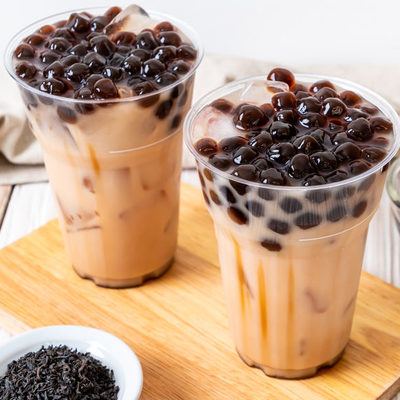
Milk Tea
What is Milk Tea?
Milk tea refers to any kind of tea drink with milk added to it. The proportion of tea to milk might vary in different dishes and the method of preparation can be different. It is usually consumed hot but there are also chilled recipes that combine both milk and tea.
- Sugar, honey, cardamom, cinnamon, ginger, pepper, and other ingredients may be added to it.
- This drink usually uses black tea in its preparation. In some countries, milk tea is the default variety of tea.
Milk tea is commonly consumed in countries such as:
- India
- Sri Lanka
- United Kingdom
- Canada
- Australia
- Hong Kong
- Nepal
- Pakistan
- Bangladesh
- Mongolia
- Thailand
- Iran
Origin
Tea originally comes from China. Tea drinking originated in southwest China and that the Han emperors drank tea as early as 2nd century BC. It has often been used as a medicine throughout the ages. Tea was originally consumed as green tea. In China, black tea was known as red tea, and was only discovered in the mid-17th century.
When an army from Jianxi camped near a tea factory, the tea production was delayed. The tea leaves remained in the sun for longer and the prolonged oxidation turned the leaves darker than usual. The farmer placed the leaves over a wood fire, resulting in the Lapsang Souchong, the first black tea.
The first use of tea leaves in India was recorded in 1662, probably brought to western India by Chinese traders. Tea production gained traction in India in the 1820s when the British colonizers started to set up large scale tea plantations. Britain started tea plantations in other colonies such as Sri Lanka, Kenya, Mauritius, South Africa, etc.
Today, India and China together produce more than 60% of the world’s tea. The world consumes around 6 million tons of tea per year.
Nutrition
There are several reasons why tea is a great drink to have on cold afternoons or busy mornings.
- Tea is known to help fighting cancer due to its high level of antioxidants because of the existence of polyphenols. Evidence suggests that incidence of certain types of cancer is lower among tea drinkers. The antioxidants also help in combating gum disease.
- Tea can keep the teeth strong and healthy because of the fluoride content present in it.
- Tea contains flavonoids which can keep the heart healthy by lowering bad cholesterol. These flavonoids also keep blood pressure in check and boost immunity. They also help in combating inflammation.
- And the main reason we drink tea is that it has caffeine, which heightens mental alertness.
- Milk provides calcium, vitamin D, vitamin B12, and potassium. This helps in keeping bones strong, regulate blood pressure and digestive functions.
- Milk also contains folate, thiamine, riboflavin, phosphorous, etc. It also contains good levels of protein; casein and whey protein are both good for health, the former promoting absorption of the calcium and minerals and the latter promoting muscle building.
- Milk also contains complex carbohydrates and fats.
However, despite its many positive effects, this drink must be taken in moderation. Over consumption of caffeine can lead to insomnia, diarrhea, tremors, heartburn, dizziness, etc. However, because milk tea is filling, regular drinkers tend to consume less caffeine. Also, milk cannot be consumed by everyone. About 65% of the human race is lactose intolerant.
Milk tea recipes
This is consumed in different parts of the world with slightly different tweaks. Here are a few recipes:
- Royal Milk Tea (Japan)
- Iced Black Tea Latte
- Samovar Tea (Russia)
- Masala Chai (India)
- Thai Milk Tea
- Hong Kong Milk Tea
- British Milk Tea
FDA regulations
The FDA regulates milk and describes it as the lacteal secretion from the milking of healthy cows. It should be free of colostrum. Packaged milk must be pasteurized and shall not contain less than 8¼ percent milk solids.
The FDA has standards and specifications for the tea bags or infusers, which must be adhered to. The USDA covers other aspects of tea production, import and packaging. It describes black tea as fully fermented, dry tea and specifies different labels for different sizes of black tea but selling tea dust is not allowed. The USDA also governs instant milk tea mixes regarding their composition and quality. However, all tea processing must be done in accordance with the sanitary and safety requirements of the FDA.
References
The Story of Tea: A Cultural History and Drinking Guide by Mary Lou Heiss, Robert J. Heiss
“Tea” Encyclopedia of Products & Industries – Manufacturing. Encyclopedia.com. 23 May. 2020
https://www.encyclopedia.com/plants-and-animals/plants/plants/tea
Agnieszka Kosińska, Wilfried Andlauer, in Processing and Impact on Antioxidants in Beverages, 2014
https://sciencedirect.com/science/article/pii/B978012404738900012X
Penn Medicine, 2019
https://www.pennmedicine.org/updates/blogs/health-and-wellness/2019/december/health-benefits-of-tea
